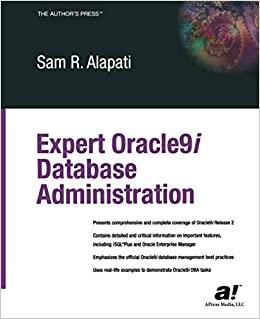Answered step by step
Verified Expert Solution
Question
1 Approved Answer
In FAT 1 2 , FAT 1 6 and FAT 3 2 , the number ( 1 2 , 1 6 , 3 2 )
In FAT FAT and FAT the number is
Question options:
the year they were introduced.
number of bytes per sector.
number of bits to refer to clusters.
the FAT versions.
Question Mandatory point
Data is written to or read from the hard disk
Question options:
sector typically bytes at a time.
byte at a time.
word at a time.
bit at a time.
Question Mandatory point
On a hard disk space is allocated to a file in terms of
Question options:
bits.
bytes.
sectors
clusters.
Question Mandatory point
Slack space is the
Question options:
unused allocated space to files.
used allocated space to files.
space of no interest to hacker.
space of no interest to forensic engineer.
Question Mandatory point
The unallocated clusters on a disk
Question options:
are empty.
may have data from previous allocation.
are of no interest to forensic engineer.
are of no interest to operating system.
Question Mandatory point
This file system always stores a value of xAA in byte number and
Question options:
EXT
NTFS
UFS
FAT
Question Mandatory point
The partition table in the master boot record MBR is stored at byte numbers
Question options:
outside of the disk.
Question Mandatory point
The FAT system has a signature xAA in bytes FAT has
Question options:
the same signature at the same location.
same signatures but at byte numbers
different signatures at the same byte location
xAA at bytes
Question Mandatory point
The following clusters in FAT are unusable by a programmer because they are unaddressable. They are used for information for the operating system, such as media type.
Question options:
the first two clusters and
the last two clusters
any two clusters.
secret clusters.
Question Mandatory point
In FATxFFF marks
Question options:
end of file.
end of cluster.
good cluster.
bad cluster.
Question Mandatory point
Recovering files in FAT is not easy when
Question options:
they are fragmented.
clusters have been overwritten.
there are missing entries andor directories.
any of the above.
Question Mandatory point
Logging, File permissions, compression, encryption and alternate data streams are some of the properties of
Question options:
NTSF
FAT
FAT
FAT
Question Mandatory point
A deleted compressed file in NTFS is
Question options:
easier to discover by a forensics engineer than an uncompressed file because it is smaller.
harder to discover by a forensics engineer than an uncompressed file because it needs decompression.
is not possible.
is something a forensics engineer never comes across.
Question Mandatory point
The encrypting file system EFS stores the encryption key.
Question options:
publicly.
separately from the file on the disk.
with the file.
on the master boot record because it is inaccessible by the user.
Question Mandatory point
The file encryption key in encrypting file system is encrypted
Question options:
using only the users public key so that only she can decrypt it to recover the file
using users and a recovery agent's public keys so that only these keys can decrypt it to recover the file
using only the users private key so that only she can decrypt it to recover the file
using only the OS public key so that only the OS can decrypt it to recover the file
Question Mandatory point
Alternate data stream was introduced to support
Question options:
Windows NTFS files.
FAT files.
EFS files.
Macintosh files.
Question Mandatory point
In NTFS there are files that store the metadata for files.
Question options:
True
False
Question Mandatory point
Tracks in a hard disk are defined by the manufacturer. A track consists of
Question options:
many sectors
one sector.
one cluster.
less than one sector.
Question Mandatory point
On a hard disk drive
Question options:
tracks and sectors are logical while clusters and partitions are physical.
tracks and sectors are physical and also clusters and partitions are physical.
tracks and sectors are logical and so are clusters and partitions.
tracks and sectors are physical while clusters and partitions are logical
Question Mandatory point
$MFT file is present in all file systems.
Question options:
True
False
Step by Step Solution
There are 3 Steps involved in it
Step: 1

Get Instant Access to Expert-Tailored Solutions
See step-by-step solutions with expert insights and AI powered tools for academic success
Step: 2

Step: 3

Ace Your Homework with AI
Get the answers you need in no time with our AI-driven, step-by-step assistance
Get Started


